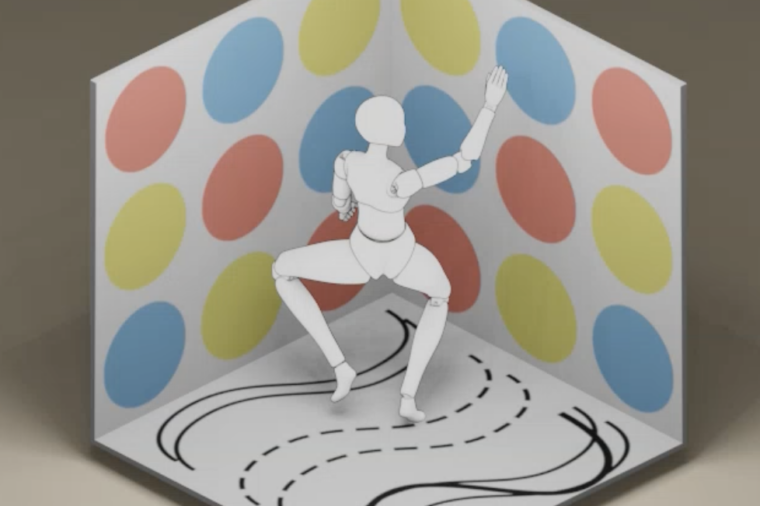Inspired from the twister game, “Twist Twister” is a physical game designer for elementary children providing learning experience in motor skills, spatial awareness, body anatomy, and basic form of choreography.
The traditional twister game is limited by simple color distribution, no spatial attributes, lack of sensory experience, and only provides two-dimensional movement exploration. Also, in the game, since the twister map is placed on the ground, players are mostly maintaining a bending down position, without activating other parts of the body.
Therefore, in this evolved “twist twister” game, I decompose the map into red/blue/yellow round stickers on the wall, and provide diverse distribution of each color in the horizontal and vertical directions. When calling out a color, for example red, the player can choose whichever red sticker on whichever wall. As for the body parts, in addition to hands and feet, the spinner also adds more specific body parts like elbow, knee, pelvis, toe, heel, neck, etc.
On the floor level, there are three areas, aimed at providing the participants inspiration on how to connect the random actions generated on the two walls, and inspire them about the basic form of connecting choreography. On the left, the first area where the UI shows two solid line SS close to each other, is the Simultaneous area where all active body parts move at once. For example, in the picture, the hand and knee move simultaneously. In the middle area where the UI shows two dashed line SS, it’s the Successive area where adjacent body parts move one after the other. Using the same example, the participant needs to first move the hand, then think about how this flow of motion can flow through their arm, shoulder, center of body, then to the pelvis, front thigh, and then knee. That is, when standing in the Successive area, the completed flow in the body needs to be shown, with the starting point and ending point being the hand and knee respectively in this example. On the right, the area where the UI shows two solid line SS connected by a thicker S line going through them, it’s the Sequential area where non-adjacent body parts move one after the other. Still using the same example, first extend the hand, then move the knee.
Ultimately, with different combinations called out by the spin board and personal choices, players can freely explore the possibilities of the body and space.



